This is one of my all-time favorite Bull Ring challenges. It includes 5 Parts. Here are the Foundational rules for all Parts:
- Each participant must hold the end off his/her string at all times [I have a small knot tied at the ends of my Bull Ring strings - so I usually say, 'must hold the knot at the end of their string at all times'.]
- All participants in the group must hold on to the end of at least one string at all times during the adventure.
- Strings [for safety reason] may not be wrapped around anything during the adventure. [Be sure to define what a 'wrap' is to you.]
- The round object may only be touched during a re-set after it falls to the ground/floor.
- If the round object drops during any Part of the adventure, you must start over from Part 1. [Or, if there are time constraints, start over with the Part they were working on when the object dropped.]
Check out the pictures above for the basic set up. You can adjust it in any way to meet the needs of your group. There is a starting line, three obstacles and a finish where the group places the object back onto a tower.
Towers - Start & Finish - Options for Towers are shared in the Make a Bull Ring post.
Spot Field - These are game spots (see the, Tools for Team Builders: Game Spots post for spot ideas). Create a good size field - the further the spots are apart, the easier it seems to be.
Trap Door - This is a simple self-standing structure made from 1/2 inch PVC tubbing and connectors.
Hole in the Wall - This is a hula-hoop taped to chairs. The higher the hula hoop is off the ground, the more challenging it becomes.
Part 1:
The Bull Ring is set down on the ground, the ring is over the tower, the round object is on top of the tower and all the strings are laid out flat and straight on the ground - all of this is behind the designated starting line.
Challenge: Pick up the round object with the Bull Ring to where everyone in the group is standing up.
Part 2:
Challenge: Move the Bull Ring through the Spot Field.
If a participant's foot is on the ground it must be touching a spot [this does not mean the entire foot must be on a spot]. If a foot touches the ground without touching a spot, the group must begin again at Part 1. [Or, the participant must close his/her eyes for the remainder of Part 2 - yes, still stepping on spots only. If this person touched the ground again, without stepping on a spot, then start over at Part 1.]
Part 3:
When a participant places his/her string end through the 'Trap Door' [opening in the PVC structure] he/she can safely step off the spots in Part 2.
Challenge: Move the Bull Ring through the Trap Door.
Participants have a little wiggle room when it comes to always holding the end [knot] of the string. Once the hand-to-hand transfer is made through the Trap Door, holding on to the end [knot] is expected again.
Part 4:
Challenge: Move the Bull Ring and participants through the Hole in the Wall [hula- hoop].
Part 5:
Challenge: Place the round object on top of the final tower, set all strings on the ground and let go of all strings.
Reminder: The Foundational Rules must be followed during all Parts of the Adventure.
I was a participant in the bull ring activity as a part of an experiential education session. It was the first time that I did the bull ring. At first it appeared to be challenging to just lift the ball off the pipe. Once the ball was on the ring and in transit, it was easy for us to transport it until we had to pass through a narrow door. We dropped the ball, had to begin again.
We were the last group to reach the destination. At this point it became a little challenging. All five groups had to place the ball simultaneously [on the tower structure]. One group dropped the ball at this point. They had to begin again [from their starting spot] and the remaining four groups had to balance and hold the ball until all groups were together.
It was fun, it was engaging as well as challenging! It was challenging to keep the clarity in communication while discussing strategies.
When it was time to place the balls [again], two groups dropped. Only three groups managed to place the balls on the pipe.
Chris Here: I see so much to process, just from this story. What do you see? [I share my thoughts below.]
I go a little bit different route with some of my leadership groups and fasten a pen to the strings with strings at top and at the bottom of the pen. I then take a child's coloring book of connect the dots blow it up to an 11x17 sheet and have the group connect the dots. Sometimes I will lay small flat obstacles under the paper [e.g., coins] that they may encounter while they are connecting the dots.
Variations include:
- Blind folds with one person directing the action.
- Only the top set of strings is blindfolded
- No talking
- Making the strings extra long
It is a great activity when one is limited to the constraints of a board room!
- Using the lanyard clips, I have the strings free flowing through the clip, with one participant on each end of the string. The string is 20 feet long, both ends have a knot where the participant holds the string with one hand. They cannot use the other hand to gather up the string. The free-flowing string adds a dynamic process for the two participants. Both have to work together to keep the string "engaged" or else the object falls. With this set up, you can have eight participants with four clips. Four clips means everyone has to do their part or else the object falls. The dynamic nature is interesting because it involves communication between the two partners, as well as all the partnerships communicating as a team.
- When the group 'clicks' into the ring, now you have the partnerships talking about their commitment to the team and/or goal, etc.
- The dynamic nature also adds a problem solving and commitment feature to the game. For greater control of the ring and object. If the partnership agrees that one person should move closer to the ring while the other one moves farther away, the person who was closer - possibly 6 inches away from the ring - allows that person tremendous "control" over the process, both in the communication, because they can visually see the rings position in consideration of the PVC tower, and, because his string is so short, creating tremendous control and stability. It is fascinating though because his partner now has around 20 feet of string meaning he is far away from the problem thus has to be very tuned in to the communication to participate effectively.
- If you add obstacles so the teammates now have to manage around chairs, etc., communication becomes critical. The person far away that has these obstacles versus the person close to the ring. Tremendous metaphor for business.
- And let's not forget, blindfolds and/or moving the ring through hula hoops.
- And now, let's build a community. Have 2 to 4 rings, all connected with a thin, bungee cord with lanyard clips that are 1 foot to 4 feet long. These are connected to another teams bullring. 2 to 4 teams, each contributing to the overall success of the group.
- Finally, the string I like to use is parachute cord. A little bit thicker thus not prone to getting into knots or tangling with the other strings. Furthermore, it does not snag or fray. Storing by daisy chain is easy. Cutting the string with a heat rope cutter tool, or some other way to seal the ends is recommended.
- I love M.P.s comment, 'It was challenging to keep the clarity in communication while discussing strategies.' Lots to discuss around this point. What is 'clear' communication? How do we know when we're clear. How did we want to keep clarity in the future?
- I would talk about how it was 'challenging' to get started with lifting the Bull Ring together, then once in 'transit' it was easy. How does this relate to a typical team/group project? How does the outcome fit into this progression?
- Talking about 'drops' (a.k.a., mistakes) is available. How did we manage drops? How did we treat each other? What support/help did we offer?
- What about 'waiting' for a group that is behind? When we're done with our part, how does the group manage waiting for others? Is there any way to help? [I wonder, could the landing structure have been moved closer to the group that needed to start over so the rest could meet them part way to save time? And, is the risk-reward worth it?]
- Finally, in the end, [I'm assuming there was a time restriction, since the droppers didn't start over], only three groups out of five were successful at placing the objects on the 'pipes' - how does this sit with the group? How do they move on after this result?
What else did you 'see' in the story? Leave us a Comment below.
All the best,
Chris Cavert, Ed.D.

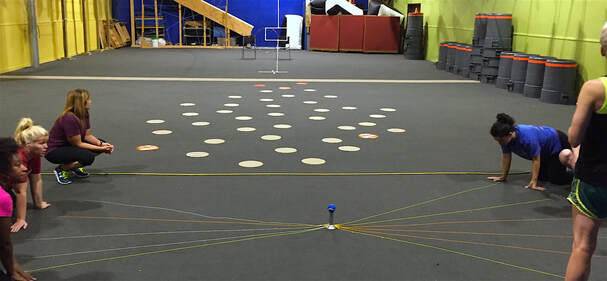
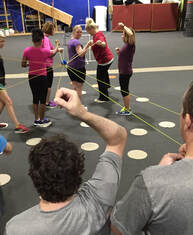
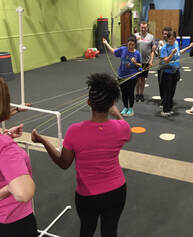
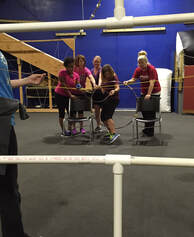
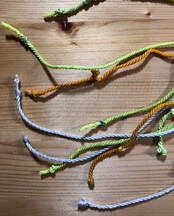





 RSS Feed
RSS Feed